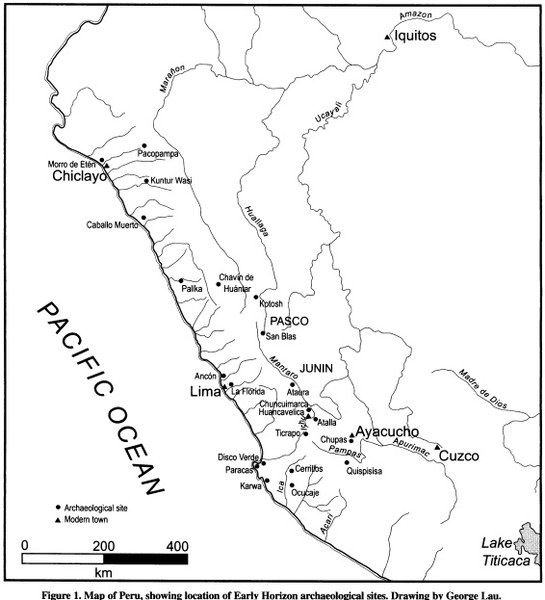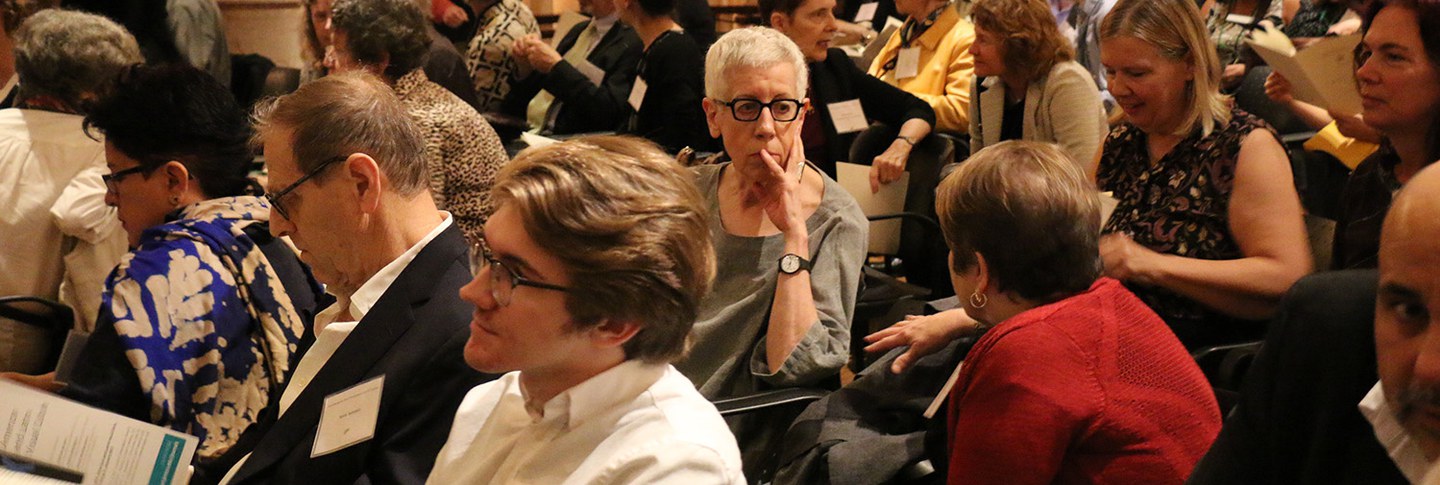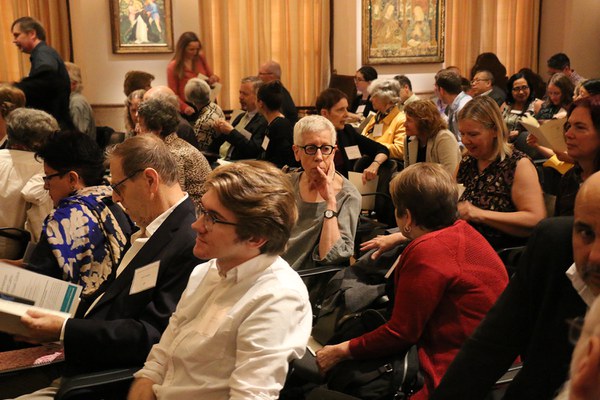Held October 5 and 6, the annual Pre-Columbian Studies Symposium, “Reconsidering the Chavín Phenomenon in the 21st Century,” was organized by Richard Burger (Yale University) and Jason Nesbitt (Tulane University), with support from Colin McEwan and Adrianne Varitimidis. The conference was designed to provide a comprehensive synthesis of the pan-regional Chavín phenomenon based on data from recent archaeological investigation at late Initial Period and Early Horizon civic-ceremonial centers and related sites. Building on a surge of archaeological research over the last 15 years, the symposium consisted of a series of talks covering different geographical areas on the coast, highlands, and ceja de selva (cloud forest) of Peru. Each presentation examined themes central to understanding the Chavín phenomenon at local, regional, and interregional levels. Some of the talks included new discoveries such as unknown subterranean galleries at Chavín de Huántar, a Manchay-style polychrome frieze decorating a buried plaza at Cardal, and a sunken circular plaza on the summit at Campanayuq Rumi.

Many of the talks took a bottom-up approach to the Chavín phenomenon, viewing these cultural transformations from the perspective of peripheral zones, such as Huancavelica and Ayacucho, and emphasizing the variability between them and the impact on daily life. The groups associated with these regional centers were presented as having agency that resulted in distinctive responses to the expanding Chavín phenomenon. In some cases, as seen in the presentation on the Nepeña Valley, alternative patterns of public practice were developed as an alternative to Chavín. In Nepeña, large centers featuring multiple plazas and environments designed for feasting came to replace the long-standing pattern of pyramid complexes decorated with religious iconography. Some areas, such as the northern ceja de selva, were shown to have been characterized by radically different responses to the Chavín phenomenon despite relative proximity to each other. In at least one case, that of the Lurin Valley of the Central Coast, incorporation into the Chavín sphere of interaction did not result in increasing prosperity or complexity and did not reverse the widespread sociopolitical collapse at the end of the Initial Period (ca. 900 BCE). It did, however, stimulate a new emphasis on rituals of ancestor veneration. The emphasis on cultural variability and agency in so many of the presentations at the symposium stood in sharp contrast to traditional treatments of Chavín. Like the Dumbarton Oaks Chavín Conference of 1968, this symposium constituted a benchmark in the investigation of one of the first civilizations to emerge in Latin America.
Throughout the conference, there appeared to be a consensus that the ascendancy of Chavín de Huántar cannot be understood as an isolated phenomenon. During the first half of the first millennium BCE when Chavín de Huántar was prospering, contemporary cultures of the Peruvian coast, highlands, ceja de selva, and tropical forest regions also experienced socioeconomic, technological, and religious transformations. The synchronicity of these widespread changes coupled with intrusive Chavín material culture and iconography at distant centers suggests that Chavín de Huántar influenced a large region through the expansion of religious ideology and intensified long-distance interaction.

